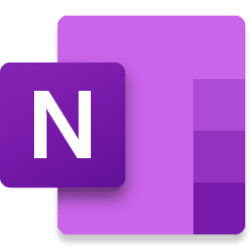Microsoft 365 Insider Blog:
Hi, Microsoft 365 Insiders! My name is Alfred Hellstern, and I’m a Product Manager on the Office Interoperability team. I’m pleased to announce that Word, Excel, and PowerPoint now support the latest version of the OpenDocument format, ODF 1.4.
Microsoft 365 apps now support OpenDocument Format 1.4
With this change, ODF files in Microsoft 365 apps will now save only to the ODF 1.4 format. ODF 1.4 adds support for a number of features—which we’ll explore below—that are already supported by the Open Office XML format (.docx, .xlsx, and. pptx).NOTE: ODF 1.3 and earlier files can still be opened in Microsoft 365 apps but will be saved as ODF 1.4. Products that only support the 1.3 format, such as older versions of Office, can open files saved in the 1.4 format but won’t support the new features.
How it works
- Open an existing file or create one in Word, Excel, or PowerPoint.
- Select File > Save As.
- Specify the folder you to save the file in, click the Save as type down arrow, and then select OpenDocument Text (*.odt) in Word, OpenDocument Spreadsheet (*.ods) in Excel, or OpenDocument Presentation (*.odp) in PowerPoint.

- Click Save.
What’s new?
ODF 1.4 introduces many improvements to the popular format—here are a few for you to check out:Word
- Tables in shapes: Tables are now allowed within shapes. Previously, only textboxes allowed tables.
- Lists from zero: Lists that start at 0 are now supported.
- Non-overlapping images and shapes: ODT files now support the option to prevent images and shapes from overlapping with other images and shapes.
- Number list formats: Previously, ODT files supported only a subset of the number list formats available in Word. Now, all formats are supported.
- Odd and even page breaks: If you add a section break and specify an even or odd page, that will now be saved to the ODT file.
- Additional writing modes: New writing modes have been added to the ODT specification. If you have certain languages enabled, you’ll be able to use them in tables and paragraphs where supported for .docx files.
- Decorative objects: A new accessibility attribute to specify that an object is purely decorative and may be ignored by assistive technologies.
Excel
- Error values: Minor adjustments were made for persisting error values to an ODS file.
- Filter by color: Added support to save color filter settings to an ODS file (with certain restrictions).
- Text direction: Minor improvements to load text rotated 90° clockwise or counterclockwise.
- Decorative objects: A new accessibility attribute to specify that an object is purely decorative and may be ignored by assistive technologies.
PowerPoint
- Page numbers: ODP files now support slide numbering starting from 0. Previously, support was only for values starting from 1.
- Table cell text direction: ODP files now support 90° and 270° rotated text direction within table cells.
- Decorative objects: A new accessibility attribute to specify that an object is purely decorative and may be ignored by assistive technologies.
Availability
This feature is available in Word, Excel, and PowerPoint to Beta Channel users running:- Windows: Version 2404 (Build 17531.20078) or later
- Mac: Version 16.84 (Build 24041420) or later
Feedback
We’d love to hear from you! Please select Help > Feedback and let us know what you think. Source:

Microsoft 365 apps now support OpenDocument Format 1.4
ODF 1.4 adds support for a number of new features. With this change, ODF files in Microsoft 365 apps will now save only to the ODF 1.4 format.










